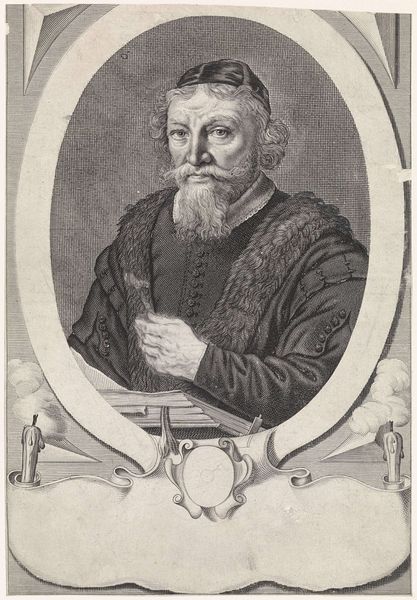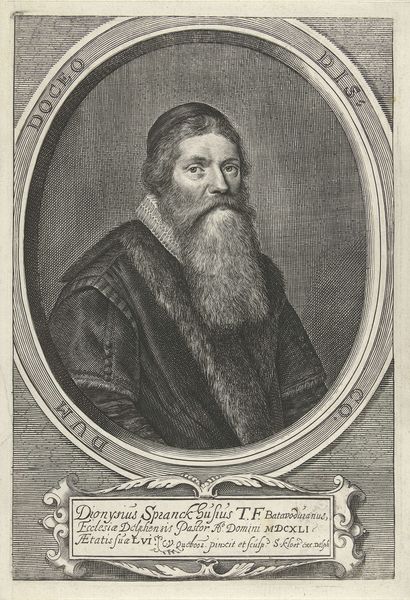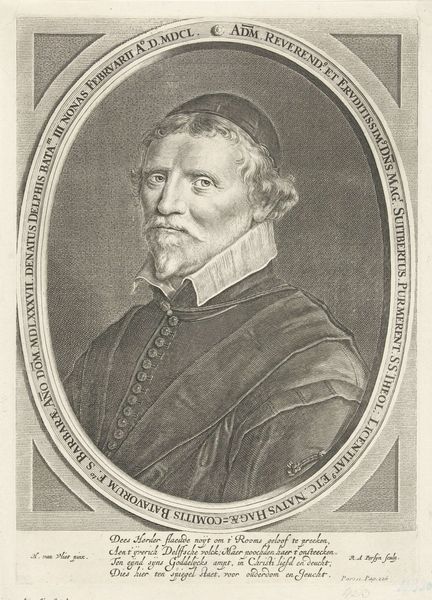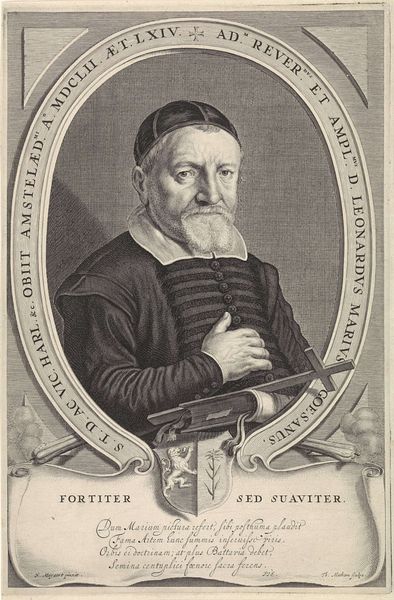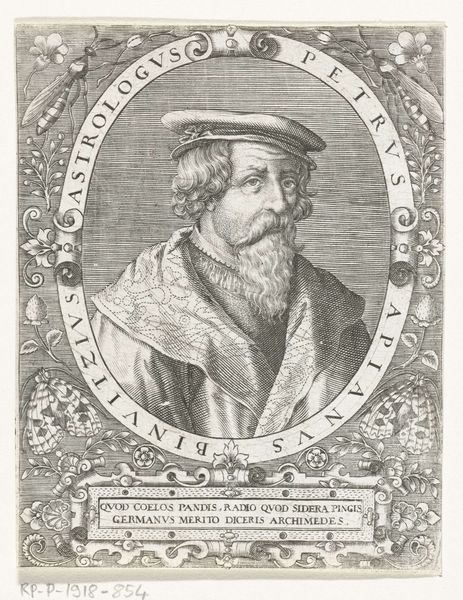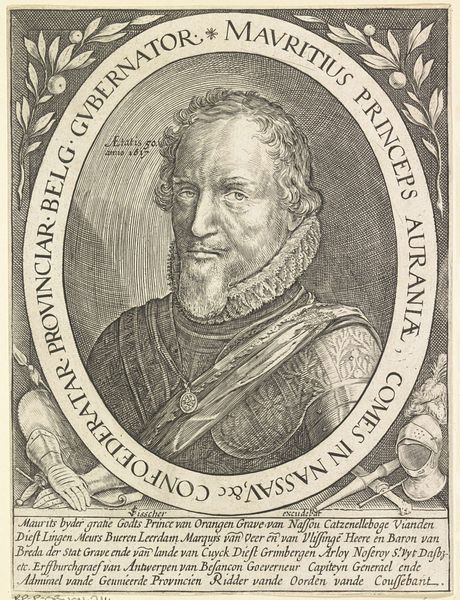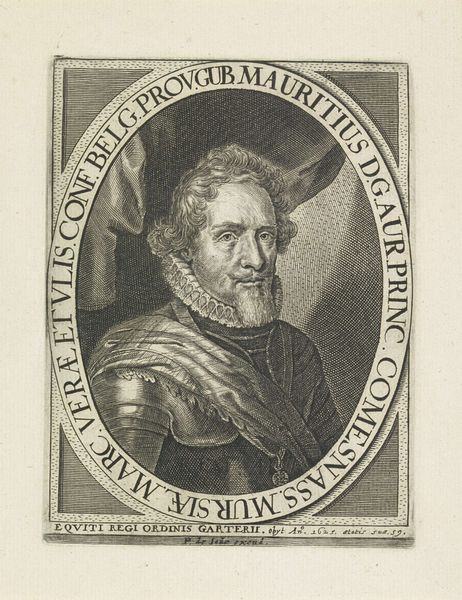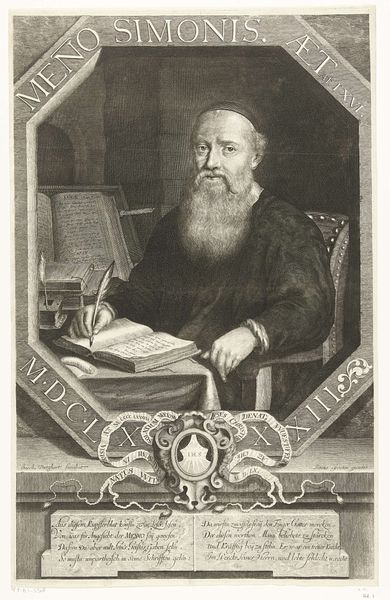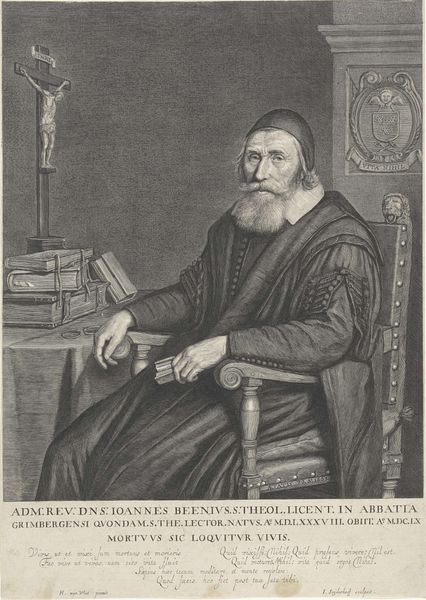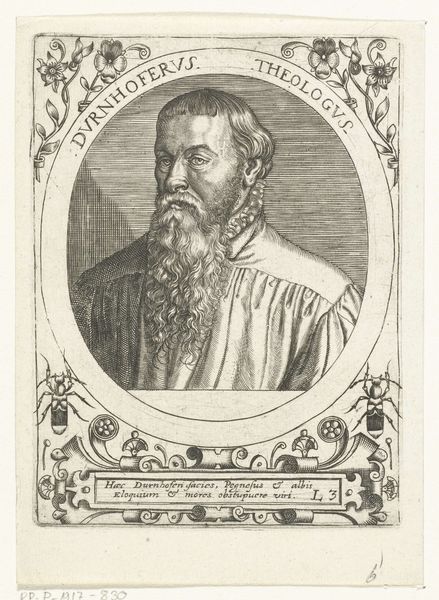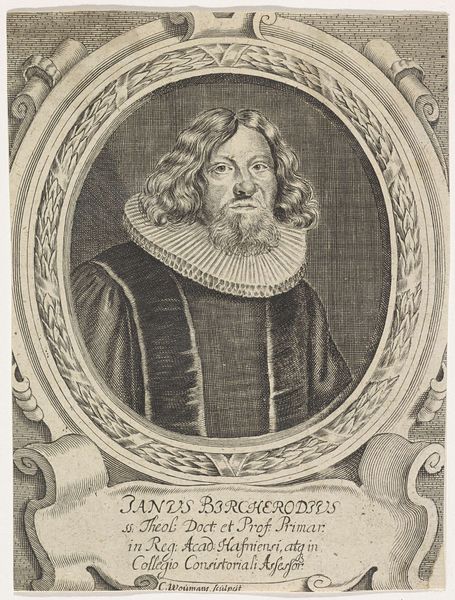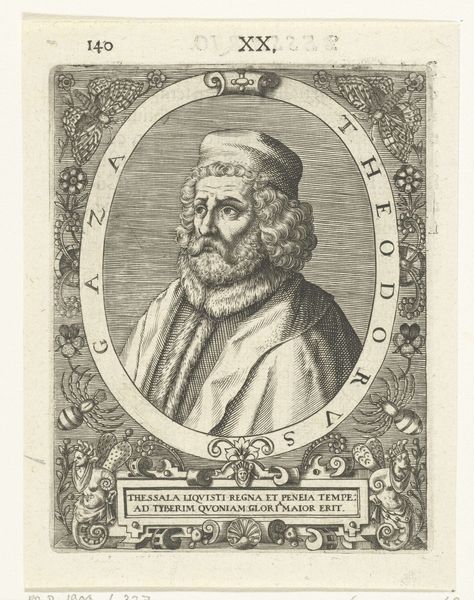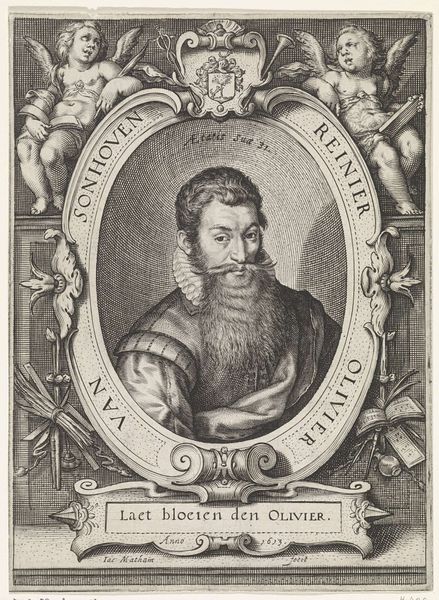
print, engraving
#
portrait
#
baroque
#
dutch-golden-age
# print
#
old engraving style
#
figuration
#
line
#
engraving
Dimensions: height 300 mm, width 197 mm
Copyright: Rijks Museum: Open Domain
Curator: Let's turn our attention to this intriguing engraving, "Portret van Stephan Crachtius." It's attributed to Theodor Matham and believed to have been created sometime between 1653 and 1676. You can find it here at the Rijksmuseum. What strikes you first? Editor: You know, I'm immediately caught by this man's face—he seems incredibly… wise, maybe? And a little world-weary, don't you think? The whole thing, with its detailed lines, it feels like looking into a forgotten story. And all that gorgeous typography circling the oval composition—wow. Curator: Indeed. Matham situates Crachtius within a complex visual and textual frame. The surrounding inscriptions offer layers of meaning, referencing his role as pastor in Amsterdam and his connections to various churches. It's also essential to notice the deliberate use of Latin phrases, contributing to an aura of scholarly gravitas, typical of Baroque portraiture intending to convey status. The whole composition speaks to power, knowledge, and the complex negotiations between the earthly and the divine. Editor: The detail is astonishing. Look at the fur trim of his robe and how each line seems to have intent—capturing the light. There's such a delicacy there. Makes me want to know this Stephan Crachtius. I imagine that Matham might have found him really quite the character. Curator: Considering the broader context of the Dutch Golden Age, portraits like these were often commissioned by the wealthy elite to signal their position and values. Here, however, the text elevates Crachtius's spiritual achievements as the true form of power—rather than wealth itself. Editor: So, it is making some commentary? I see… A thought! What if, looking closely at his eyes, they almost seem to have some sadness; this engraving perhaps suggests some humility amid all this Baroque splendor. It really prompts questions about his interior life—things you certainly couldn't read about just anywhere. That really moves me. Curator: It’s true; while acknowledging the power dynamics embedded in representation, we can still ponder individual subjectivity. It shows us the enduring appeal of portraiture and how much our perspectives shape our understandings of the past. Editor: Beautifully said! It also kind of makes you consider what sort of portraits we might want done of ourselves someday! Curator: It's a challenge to think through what legacies and stories future artists will want to capture about our time. Thank you.
Comments
No comments
Be the first to comment and join the conversation on the ultimate creative platform.
